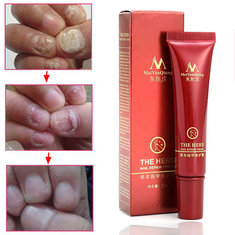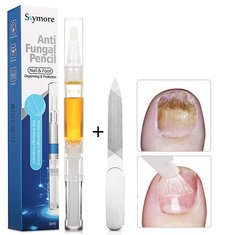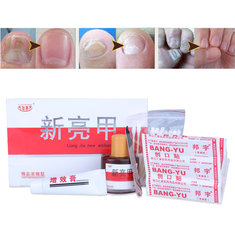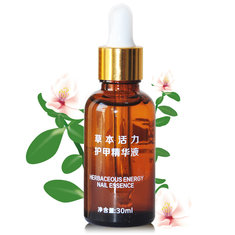Green nail syndrome – The facts
What is Green Nail Syndrome and why isn’t a Fungal Infection?
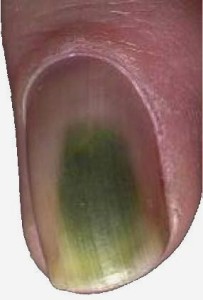 For a long time now, most individuals have regarded green nails as fungal infections. However, this is untrue. Green nail syndrome is a nail infection that is caused by a bacterium known as Pseudomonas aeruginosa. On the other hand, fungal infections are caused by fungi. This means that green nails cannot be classified as a fungal infection. Because green nail syndrome is caused by bacteria, it occurs more frequently than a fungal infection and is also easier to treat than the latter.
For a long time now, most individuals have regarded green nails as fungal infections. However, this is untrue. Green nail syndrome is a nail infection that is caused by a bacterium known as Pseudomonas aeruginosa. On the other hand, fungal infections are caused by fungi. This means that green nails cannot be classified as a fungal infection. Because green nail syndrome is caused by bacteria, it occurs more frequently than a fungal infection and is also easier to treat than the latter.
Causes
The common cause of green nails is the Pseudomonas aeruginosa. This bacterium is known to cause various diseases both in animals and people. It thrives in wet environments including sinks, Jacuzzis, bath sponges and contact lens solutions. It can also flourish in soil, man-made environments and skin flora. It can survive in both standard atmospheres and hypoxic ones. It can feed on wide varieties of organic matter, thus enabling it to infect damaged tissues or those with less immunity.
Risk factors
There are two main risk factors associated with green nails syndrome.
The first one is if your nail is lifted from the nail bed; that is referred to as onycholysis. Normally, there is a waterproof seal created by the skin on the nail. Once the nail has been detached from the nail bed, this seal is lost. This subsequently leads to the creation of a subungual space that collects dirt. Therefore, it may allow entry of the Pseudomonas aeruginosa. People such as plumbers, janitors and gardeners are at risk of separated nails.
The second risk factor is a damp environment. Considering that the bacterium thrives in wet areas, people who are in contact with water have a greater chance of getting the infection. Housewives, cooks, healthcare personnel and dishwashers are prone to green nail infection because their nails are continuously submerged in water.
There are various minor risk factors such as fungal nail infections and nail psoriasis. Also, individuals who wear tight fitting shoes for long periods (especially when exercising) are prone to the infection. This includes soccer players and military recruits.
Acrylic nails and GNS
There is a close relationship between acrylic nails and green nail syndrome. It is common to find someone who has artificial nails having a green nail infection. This is because of various reasons. One of them is that during the placement of the artificial nails, it is possible that the nail surface is not sanitized well before attaching the nail. Use of buffers and files that are not properly sanitized may also lead to the occurrence of the infection. In these two cases, bacteria may spread to the natural nail. Another way is when the artificial nail may be knocked off, thus leaving an opening through which bacteria may get in. With this in mind, it is crucial for hygiene to be maintained during manicures and when using artificial nails.
We should also note that if someone has artificial nails may also be affected by fungi, also known as acrylic nail fungus.
Symptoms and diagnosis
As the name suggests, the infection causes green discoloration of the nails referred to as chloronychia. The discoloration may vary from dark green to blue-green or bluish grey. It may involve fingernails and toenails. Usually, the nails are not painful but the skin around the nails may be red, tender or swollen.
The appearance of the nail is an enough sign for the infection. However, at times a nail sample may be taken for culture.
Most of the time a blue, deep purple and black color in nails, is a black toenail fungus, a type of fungus that usually infects toenails.
Treatment
The infection does not pose a danger to the health of the individual, but treatment is vital because the infected nails are unsightly. There are several ways of curbing the infection. One of the ways is the application of a topical antibiotic such as polymyxin B and bacitracin; which when applied about three times a day for one to four months consecutively can bring an end to the infection. An oral antibiotic like ciproflaxin may also be used. Chlorine bleach, in the ratio of 1:4 with water can be used to suppress the growth of the bacteria when applied to affected nails topically. Vinegar has also been found to be an effective method.
During treatment, it is advisable to discontinue the use of artificial nails.
Prevention
Just like any other disease or infection, it is easier to prevent than to treat. There are various preventive measures:
- Clean your hands often with soap or an alcohol-based sanitizer.
- Use disposable nail files and buffers when in a salon.
- Ensure that the nail surface is sanitized before application of artificial nails.


